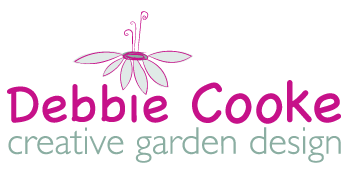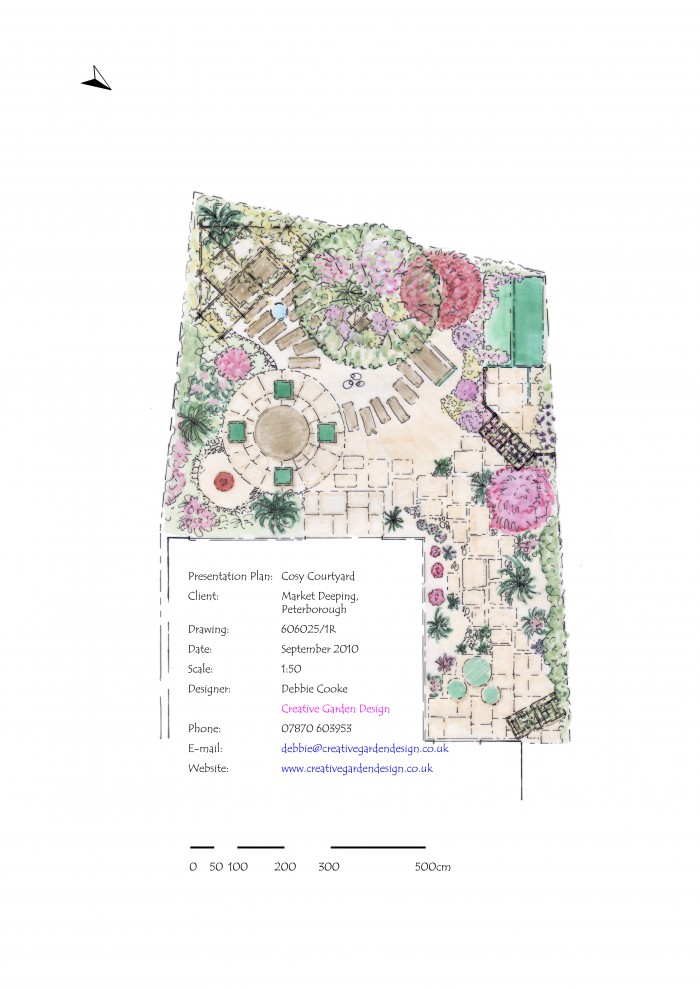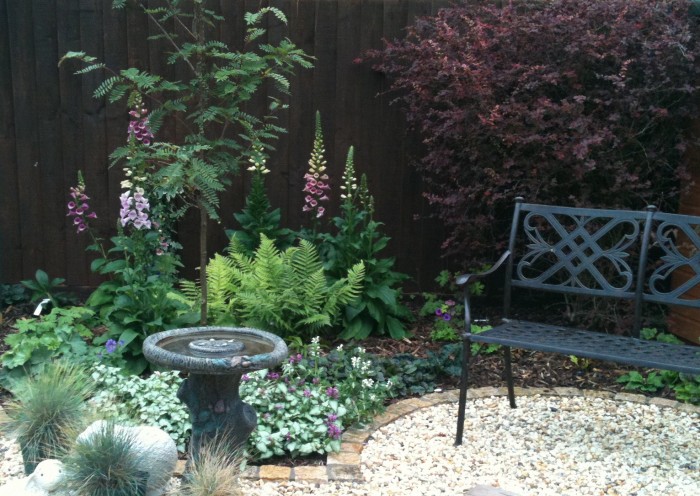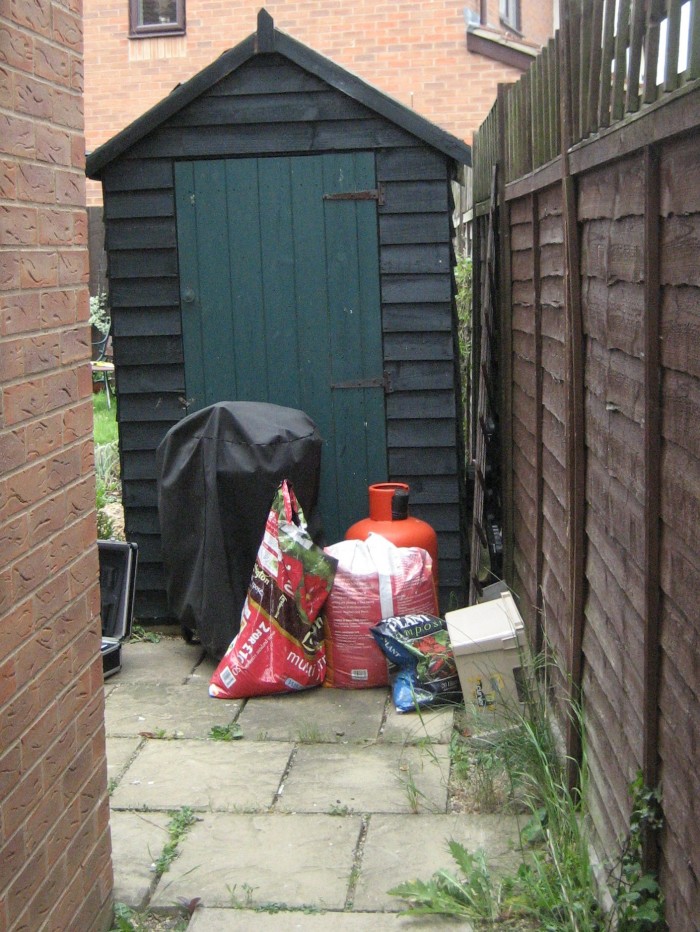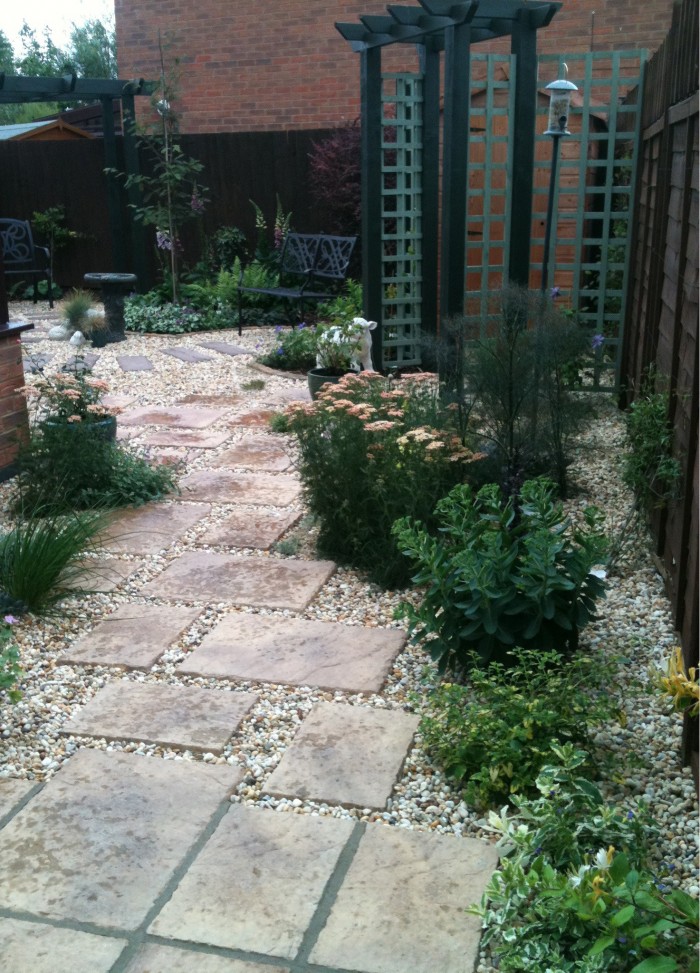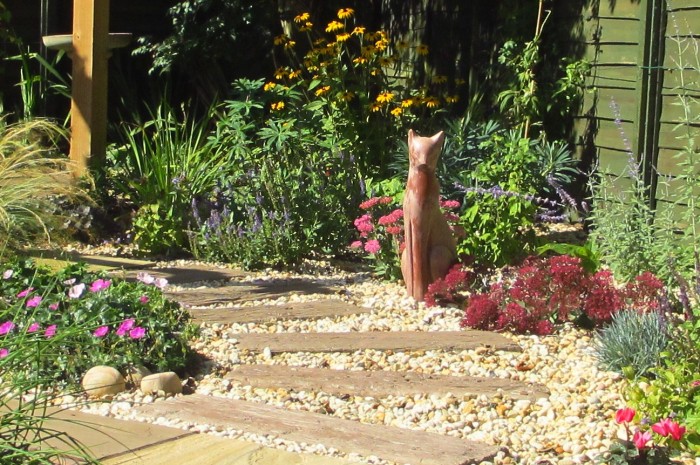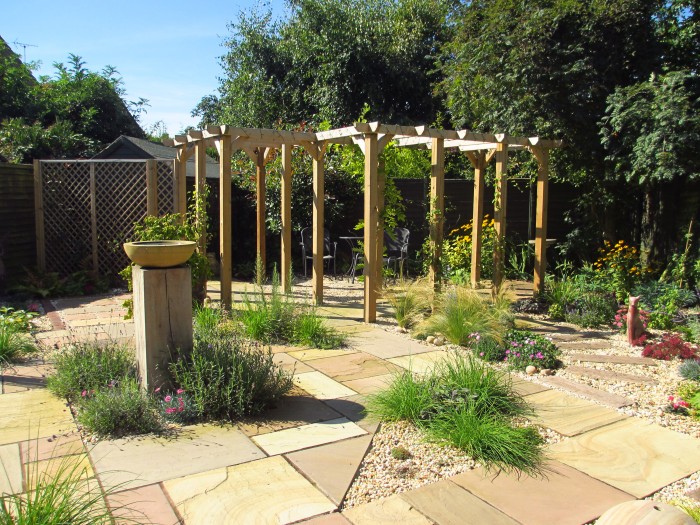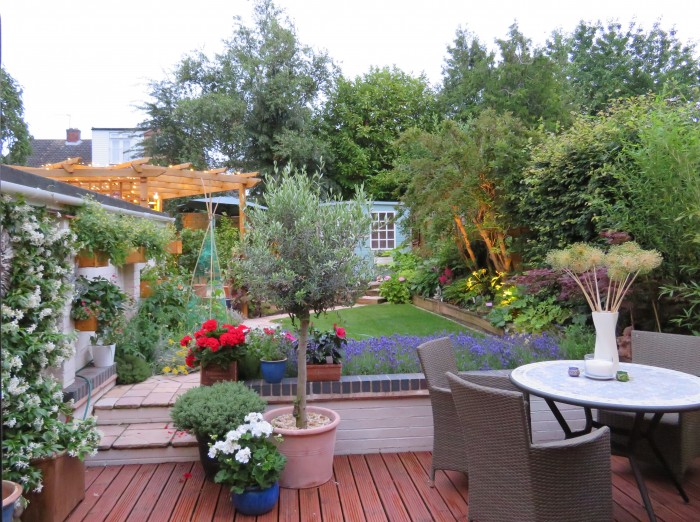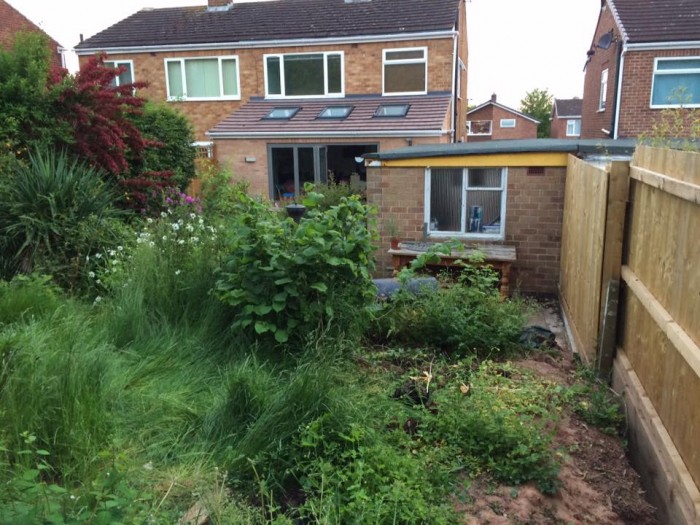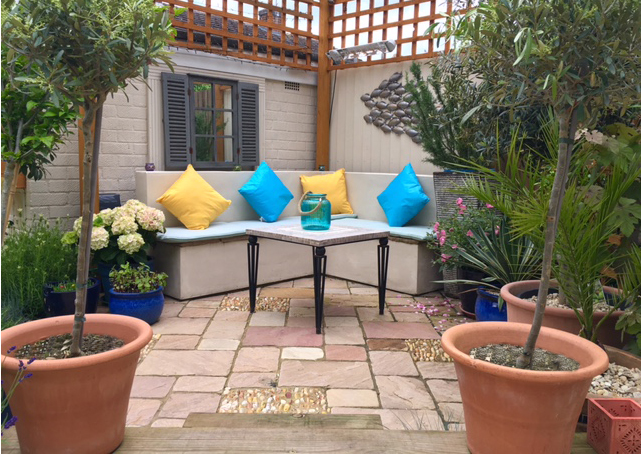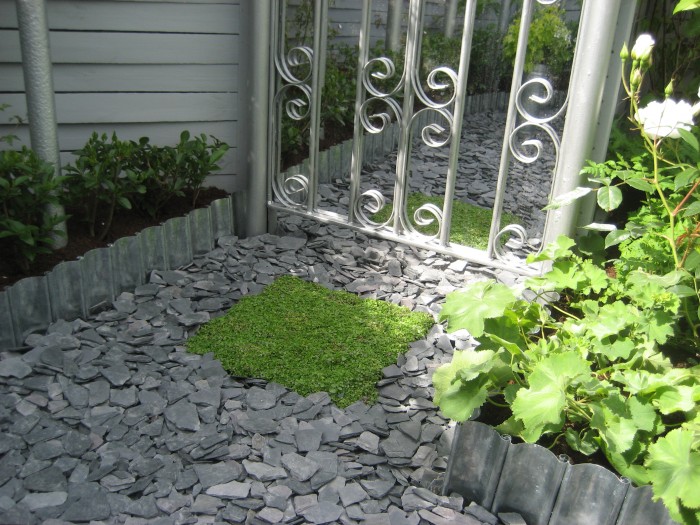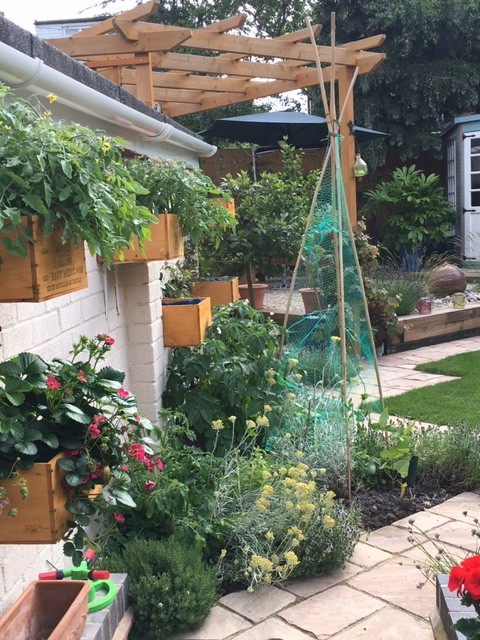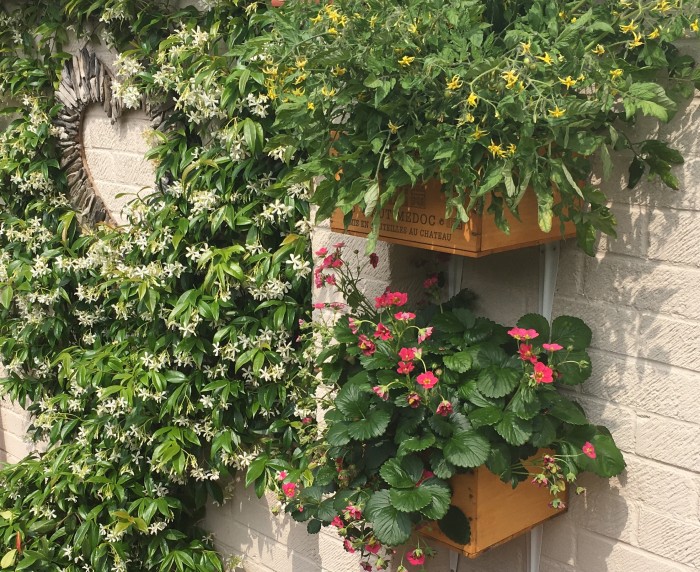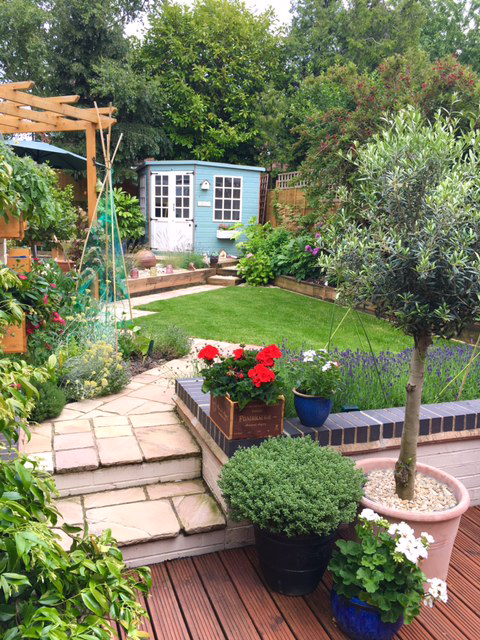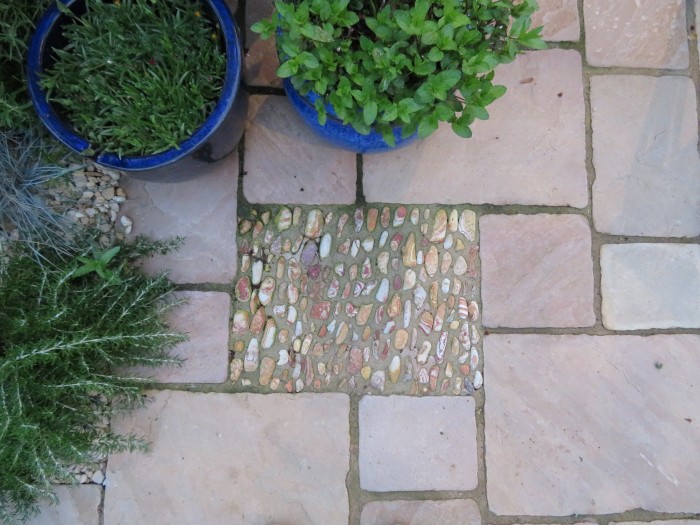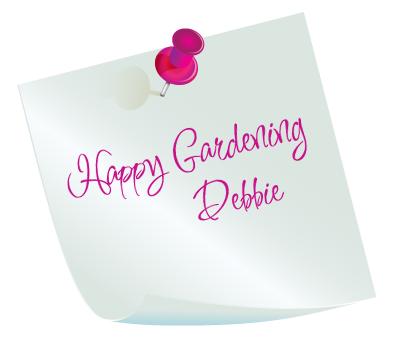Small Space Gardening
July 6, 2017 10:43 am Leave your thoughtsNot all of the clients I visit own vast gardens. Many of them are quite small, often as the result of extending the footprint of the house with a conservatory or garden room.
The drawings illustrated here are the solution for a small garden arising from just such a situation.
If you’re short of space and want to know how to make the best use of it, then read on.
Small Space Gardening need not be difficult.
Here are a few simple tips to help you get the best from even the smallest of gardens.
It’s all about the journey!
Create distinct areas:
This will give the viewer more to take in so the experience will take longer, hence making the space feel larger.
Using the Corners:
One way to do this is to create niches in the corners of the garden, as illustrated. These make good use of the space and draw the eye out to the corners of the garden rather than straight to the rear boundary. Ensure that any curves that you create are big, strong sweeping ones; these will look much more pleasing than fussy, wiggly lines. Use a peg and string to create circles in the corners and then join them up.
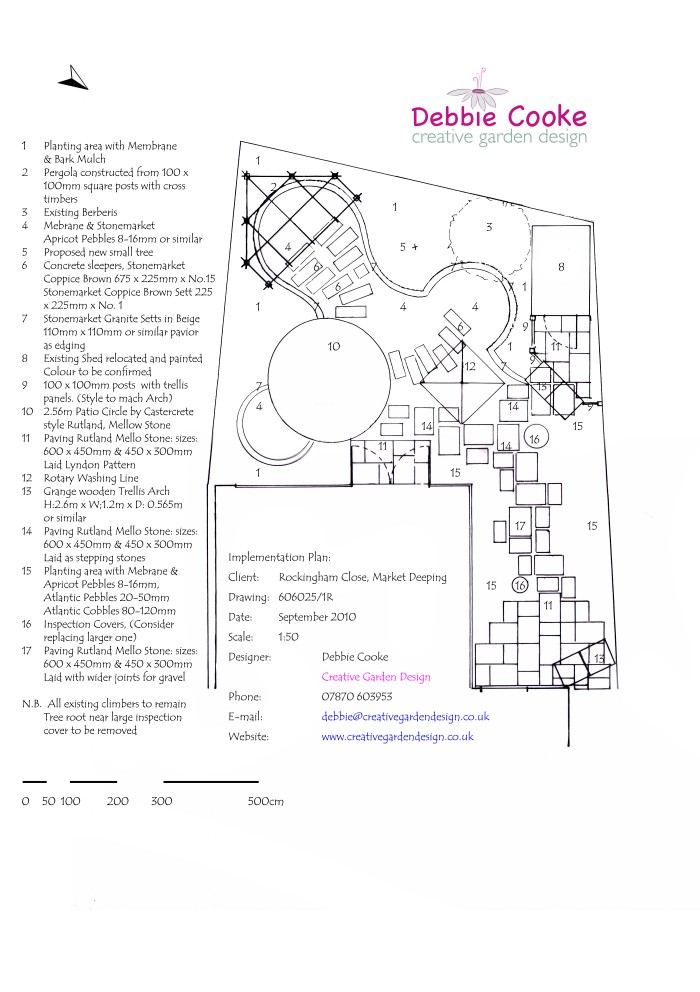 The example shown provides four different seating positions and accommodates a shed, in a very small space. As each has its own space and identity the design does not feel cramped.
The example shown provides four different seating positions and accommodates a shed, in a very small space. As each has its own space and identity the design does not feel cramped.
Large borders surrounding the seating helps to Blur the boundaries.
Cosy Courtyard before the redesign
And after
These before and after shots show how the shed was the first thing you were greeted with. By moving and screening it, immediately the garden is opened up. The paving is laid to lead your eye diagonally across the garden. This draws your eye away from the screened shed, to a more desirable view and gives you the longest view possible in what is a very small garden.
To see the full project for the above garden please follow the link:
https://www.creativegardendesign.co.uk/projects/cosy-courtyard/
What the client said: “How you managed to use the little space to such good effect is superb.”
A Winding path:
Create a meandering path through a space and even through borders. The longer it takes to get around the garden the larger it will feel.
Carefully placed Focal points:
Draw the eye into the garden away from the confines of its boundaries. Lots of interesting features, plenty to look at, will make the journey and therefore the experience last longer and hence it will give the impression the garden is much larger than it actually is.
Surprise and delight:
If it’s possible, don’t view it all at once; you have to go into the garden to see the rest.
Follow the link to see what the client said: https://www.creativegardendesign.co.uk/garden-design-testimonial/
The more seats you have in a garden the more views you will create. More bang for your buck so to speak.
Are there areas of your garden you are not making full use of?
You paid for that space behind the garage and then it ends up as little more than a dumping ground. Create a beautiful hideaway to make best use of all of your valuable outside space.
Behind the garage before shot
Behind the garage after shot
Create an Illusion:
Is there something beyond? Have a path leading the eye around a corner. You can take the path behind some large planting. This tricks the brain into believing that if there is a path then it must lead somewhere. When you get to the end, around the corner use a striking focal point of a pot or plant or even a bench or mirror, to make it worth going.
It’s all Smoke and mirrors:
Not suggesting you use smoke, but mirrors in small areas can help to add a sense of space. Always screen with a gate, trellis or fake window to prevent accidents. 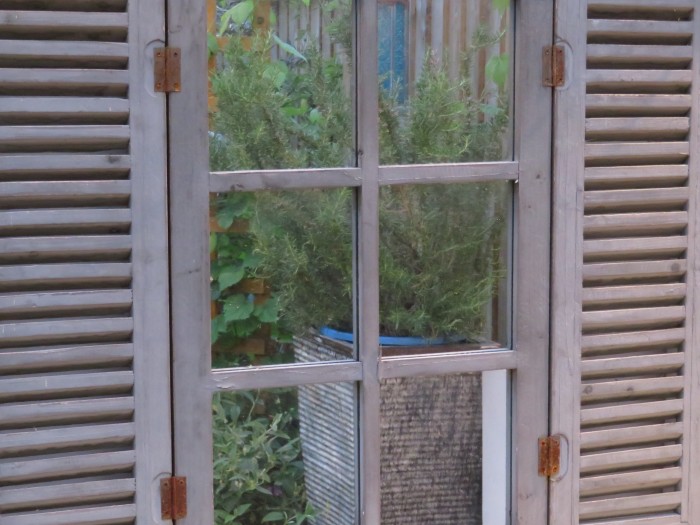
Leading Lines:
It is a scientific fact. wherever you draw a line your eye will follow it.
So if you draw a line on the ground with a path, stepping stones or even the edge of a border your eye will follow that line. You can even create lines on a vertical plane with a fence, hedge or pergola. Adding a tree or structure that takes your eye up is also a great advantage in a small space. These are called leading lines and can be used to great advantage.
Leading lines do what they say on the tin. They will lead your eye to a particular destination so make sure they lead to something worth looking at.
Growing up:
In a limited space you have to make the best use of every space. Consider climbers on every available wall and fence and even up the trunks of trees. Growing in containers on walls is a great way to make the best use of space.
Use diagonals:
A diagonal line across a space will create the longest viewpoint possible.
They don’t have to be straight, they can be curved or sinuous but leading you diagonally across the garden. They do not have to be physical, solid lines either, they can be suggested or even imaginary. Creating a striking focal point in the opposite corner to an entrance or viewing position will have the effect of making the space feel larger. Someone joked about ‘Debbie Cooke’s Diagonals’ and yes, I do use them a lot. The reason for this is ‘That it works!’
Not too many materials:
Keep your material choices to a maximum of three different types, unless your looking for rustic, cottage, otherwise it gets fussy. Include any wood as one material be it a pergola a fence a deck, sleepers or furniture. Other materials could be, one type of paving and perhaps a complimentary gravel. If you have metal archways then perhaps it might be nice to have the garden furniture in metal also. Keep it simple.
Small scale:
Unless you are going for a surreal look, I suggest you keep you choice of paving units, your structures and your furniture on a small scale, in proportion with your garden.
Themes to tie it all together:
If you create a theme for all of the garden or each area of your garden it will help the design to hang together. Look out for future blogs on different themes and ‘Getting the Look’
Plants:
They need to work harder in a small garden. Choose those which have long flowering periods or more than one season of interest with blossom, berries, interesting leaves or autumn colour and winter stems.
It’s small, it’s great, you can do wonderful, exciting things with it that won’t break the bank!
Using well directed lines and well placed, interesting, focal points can create both a visual and physical journey around the garden.
Little changes can make a big difference, so what are you waiting for?
If you want to know more, book a consultation today for some personal inspiration.
Consultations
£85 for up to two hours on site, no written report.
£120 half day on site, no written report.
£195 for up to two hours on site and including a detailed written report.
Why wait, get in touch today to find out how you can make the best use of your small space!
Give me a call on 07870 603753
or email debbie@creativegardendesign.co.uk
